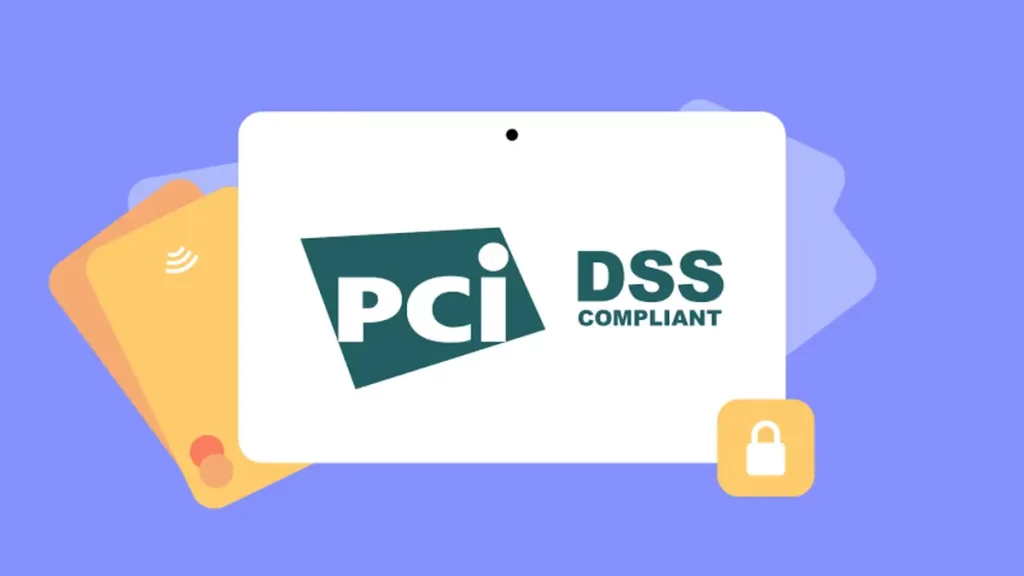Achieving PCI Compliance is essential for organizations that handle payment card information. Among the critical elements of maintaining this compliance is PCI Compliance Attestation. This comprehensive guide will help you understand what PCI Compliance Attestation entails, who needs it, the various compliance levels, and how to effectively prepare for the attestation process.
Let’s dive into everything you need to know about PCI Compliance Attestation and how to ensure your organization is fully prepared.
What is PCI Compliance Attestation?
PCI Compliance Attestation is a formal confirmation that an organization meets the requirements set forth by the Payment Card Industry Data Security Standard (PCI DSS). This attestation is documented through an official form known as the Attestation of Compliance (AOC). The AOC is a critical component of PCI DSS compliance, as it certifies that an organization has implemented the necessary security measures to protect cardholder data effectively.
The PCI Compliance Attestation process involves submitting this documentation to payment card networks, acquiring banks, or other entities that require proof of compliance. The goal is to demonstrate that your organization has met all relevant PCI DSS requirements and is committed to maintaining the security of payment card data.
Who Needs PCI Compliance Attestation?
PCI Compliance Attestation is required for any organization that processes, stores or transmits payment card information. This includes a wide range of entities:
- Merchants: Businesses that handle payment card transactions, whether in-store or online. Merchants must ensure they are compliant with PCI DSS requirements to protect their customers’ payment data.
- Service Providers: Companies offering services that involve payment card information, such as payment processors, hosting providers, and cloud services. Service providers play a crucial role in safeguarding payment card data and must adhere to PCI DSS standards.
- Organizations: Entities with access to payment card data through various means, including those that manage or support payment systems. These organizations must comply with PCI DSS to ensure the protection of cardholder information.
The requirement for PCI Compliance Attestation depends on the volume of transactions and the risk associated with the organization’s operations. Larger organizations or those with higher transaction volumes typically undergo a more rigorous validation process compared to smaller entities.
PCI Compliance Levels
The PCI DSS categorizes organizations into different levels based on transaction volume and associated risk. These levels determine the type of assessment required for PCI Compliance Attestation:
- Level 1: Organizations processing over 6 million payment card transactions per year or those that have experienced a data breach. These organizations must undergo a full PCI DSS assessment by a Qualified Security Assessor (QSA) and submit a detailed Attestation of Compliance.
- Level 2: Organizations processing between 1 million and 6 million transactions annually. These entities are required to complete a Self-Assessment Questionnaire (SAQ) and submit the Attestation of Compliance.
- Level 3: Organizations handling between 20,000 and 1 million transactions per year. They must complete a Self-Assessment Questionnaire and provide an Attestation of Compliance.
- Level 4: Organizations processing fewer than 20,000 transactions annually. These entities need to complete a Self-Assessment Questionnaire and submit the Attestation of Compliance.
How to Prepare for PCI DSS Attestation of Compliance
Preparing for PCI Compliance Attestation involves several critical steps to ensure your organization meets all PCI DSS requirements. Here’s a step-by-step guide to help you prepare:
1. Understand the PCI DSS Requirements
Begin by gaining a thorough understanding of the PCI DSS requirements. The PCI DSS framework consists of twelve key requirements that focus on security management, policies, procedures, and the protection of cardholder data. Familiarize yourself with these requirements to ensure your organization is well-prepared for the attestation process.
2. Determine Scope
Clearly define the scope of your PCI DSS assessment. This involves identifying all systems, networks, and processes involved in processing, storing, or transmitting cardholder data. Understanding the scope helps in pinpointing which areas need to be assessed for compliance.
3. Determine the PCI Compliance Level
Identify your organization’s PCI compliance level based on transaction volume and risk factors. This will dictate the type of assessment required—whether a Self-Assessment Questionnaire or a full PCI DSS assessment by a Qualified Security Assessor.
4. Conduct a Risk Assessment
Perform a comprehensive risk assessment to identify potential vulnerabilities and threats to cardholder data. This assessment will help you understand where your security measures may need strengthening and allow you to address any potential gaps.
5. Establish Policy and Documentation
Develop and maintain thorough policies and documentation that outline your organization’s security measures and procedures. This includes creating security policies, data protection procedures, and incident response plans. Proper documentation is crucial for demonstrating compliance during the attestation process.
6. Identify and Remediate Compliance Gaps
Review your systems and processes to identify any compliance gaps. Address these gaps by implementing necessary changes and improvements to meet PCI DSS requirements. This may involve upgrading systems, enhancing security measures, or revising policies to ensure full compliance.
7. Internal PCI DSS Audit
Conduct an internal audit to evaluate your organization’s compliance with PCI DSS. This audit helps identify any remaining issues before undergoing the formal assessment. It also prepares your team for the formal evaluation process and ensures all necessary documentation is in place.
8. Complete the PCI DSS Assessment
Complete the required PCI DSS assessment based on your compliance level. For higher levels, this involves a formal assessment by a Qualified Security Assessor. For lower levels, complete the Self-Assessment Questionnaire and submit the Attestation of Compliance.
9. Establish Maintenance Procedures and Continuous Monitoring
Implement ongoing maintenance procedures and continuous monitoring to maintain PCI DSS compliance. Regularly review and update your security measures, conduct periodic audits, and monitor systems to ensure continued adherence to PCI DSS requirements.
What Are the Benefits of PCI Compliance Attestation?
Achieving PCI Compliance Attestation offers several benefits:
- Enhanced Security: Demonstrates your organization’s commitment to protecting cardholder data and reducing the risk of data breaches.
- Customer Trust: Builds trust with customers by ensuring their payment information is handled securely and in compliance with industry standards.
- Regulatory Compliance: Meets industry standards and regulatory requirements, helping to avoid potential fines and penalties.
- Business Opportunities: Opens up business opportunities by meeting the compliance requirements of partners, payment processors, and other stakeholders.
Achieve PCI DSS Compliance with Fintechrite
Fintechrite specializes in assisting organizations with PCI DSS compliance and attestation. Our team of experts provides comprehensive support throughout the compliance process, from initial assessments to final attestation. Contact us to ensure your organization meets all PCI DSS requirements and secures its payment data effectively.
FAQs
Can PCI Compliance Attestation be Shared?
Yes, PCI Compliance Attestation documents, including the Attestation of Compliance (AOC), can be shared with entities that require proof of compliance, such as banks, payment processors, or business partners.
Can Organizations Use Compensating Controls for PCI DSS?
Yes, organizations can use compensating controls if they cannot meet a specific PCI DSS requirement. These controls must provide equivalent security and be documented and approved by a Qualified Security Assessor.
What Does Attestation of Compliance Mean?
Attestation of Compliance is a formal declaration that an organization meets PCI DSS requirements. It is documented through a completed Self-Assessment Questionnaire or a formal report by a Qualified Security Assessor, certifying the organization’s adherence to PCI DSS standards.
By understanding and preparing for PCI Compliance Attestation, your organization can ensure it meets all necessary requirements, protects cardholder data effectively, and maintains compliance with PCI DSS standards.

